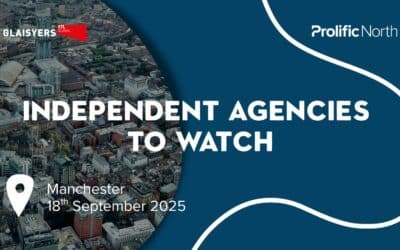Agency growth is tough. One minute you feel like you’re flying, but then you hit a barrier and further growth becomes just that bit more elusive, requiring a lot more effort, writes Phil Gripton, partner at Waypoint.
Once you reach a certain size – in our experience, the £2m mark – there’s a step-change required in how you run the business if you want to get to the next level. Essentially, it’s to do with growing up and professionalising. It’s also about having a clear view on where you want to take the business and what your end-game is. And that requires focused planning.
It might feel like everyone else around you has got things nailed, but in our experience – and we’ve helped a lot of agencies to successful outcomes – there is a well-defined set of sticking points on the road to becoming a properly run businesses.
Knowing where you’ve heading
Growth might be your mission, but to what end? Do you have a plan for what that growth is laddering up to and are you taking the right people on the journey with you?
Are you looking for investment to turbocharge growth? Or might an MBO or an EOT (when the business is sold to the employees collectively) be more in tune with your mission and culture? Perhaps you’re looking to make your own mini acquisitions or “tuck ins” in order to build scale rapidly and attract the kind of investment that becomes accessible with double-digit growth and critical mass?
Or are you looking for a formal sale to another business? Even with the latter, there are so many considerations. Are you at the end of your career and handing over the reins to your succession team who will lead the agency into its new home? Or are you just getting started with your own entrepreneurial ambitions and are looking to throw your lot in with an exciting, fast-growing group? One that will allow your agency to thrive but where you can also take on a much bigger role within the global structure.
Track the big boys – but get to know the exciting new entrants
The traditional option of selling to a big six holding company like WPP, Omnicom, Dentsu etc is now a much less common route for fast growing agencies. But you’d be wise to keep an eye on how they are adapting and the businesses that are on their radar for acquisition, as these industry giants future proof their offers.
It’s eminently sensible to monitor their corporate announcements which give a sense of where the industry is headed. For example, both Publicis and WPP have a big focus on tech, AI and data. If you’re building your agency with a sale in mind, you need to know that you’re offering what the market is looking to buy.
The buyer cohort has transformed massively in the last 10 to 15 years and there are now far more options for ambitious agency leaders looking to sell. The challenger agencies with their focus on responding to the modern marketing brief, cover a broad range of disciplines. If you’re in the business of performance, a Croud or a Jellyfish might present as an attractive buyer. Or if it’s social or influencer it might be a PE backed social-first group like SAMY Alliance.
Getting your agency ship shape
For many agencies reading this, it will be much too early to think about an exit. But whatever your end-game, you’ll want to make your agency as match fit and well managed as you possibly can. At Waypoint, we think of building and realising value in your agency as the “greatest game of your life”. You’d be foolish to leave that to chance.
We talked earlier about the sticking points that can trip agencies up. Planning for growth and exit are vital, but a poor handle on the day-to-day running of the agency can jeopardise those plans. Here are the areas where we find that agencies underperform.
Improve your sales and marketing game
A repeatable and scalable business development engine is a pre-requisite to growth and long-term success. If you’re unhappy with your answers to the following questions, you need to take action:
- Do you have a proactive outbound sales engine that consistently delivers the growth you need?
- When did you last win a big hero client?
- What is your average sale size and could it be bigger?
- Are you selling a blend of long-term retained contracts and projects or relying on shorter fixed term projects only?
- Are you adding new logo clients every quarter?
- Are you growing revenue YoY?
- Are you ever having to cut cost to make your profit numbers?
Operational and profit Improvement
Underperforming operations often lead to inefficiency, wastage and reduced profitability. Your focus should be on optimising operations to improve productivity and drive the bottom line. Ask yourself honestly:
- Are operations delivering the profit you expect?
- What key metrics do you track and measure and why?
- Where is the wastage and can you remove it?
- Where is the profit actually made in the business?
- What are the drivers of profit?
Leadership and culture – mission critical
But none of the above can deliver without the right people in the right roles. Developing a high-performing leadership team is crucial for achieving business objectives and fostering a progressive culture. Ask yourself:
- How high performing/experienced is your team, i.e. do you have the right people with the right skills in the right roles?
- How do you measure and track individual and collective performance?
- Will the business continue to function well without its founder/leader over a sustained period?
- How well does your team manage upwards?
- What sort of incentive scheme do you have to retain your leadership team?
- Is the culture in the senior team progressive, collaborative and self-regulating?
At Waypoint we’ve been involved in countless M&A transactions and investment processes over the years. Where a decade or more ago, everyone mostly skipped over culture and leadership and it got only a fleeting mention in M&A documents, it’s now a central focus for acquirers and investors. Get it wrong at your peril!










